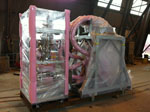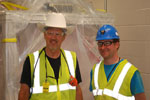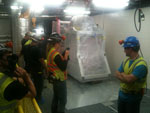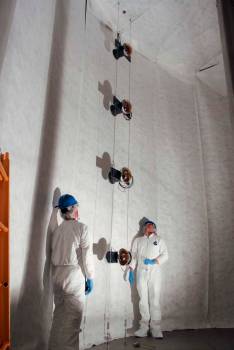LUX Detector Underground
Finally after a very slow, two-day move underground LUX has finished its journey home. The 6,000 pound detector was wrapped in plastic and foam and moved via air bearings and other apparatuses to help it be perfectly safe on its dangerous path to the underground. This marks a huge milestone in the LUX project as a whole and soon everything will be moving forward even more. See more articles about the move here:
SFGate LUX has a new home
Deep Thoughts: LUX Milestone
South Dakota Public Radio broadcast









